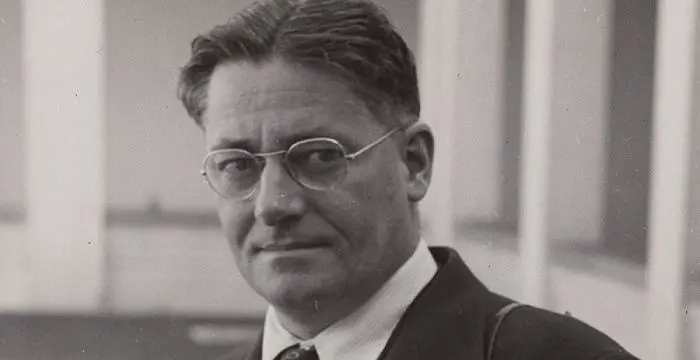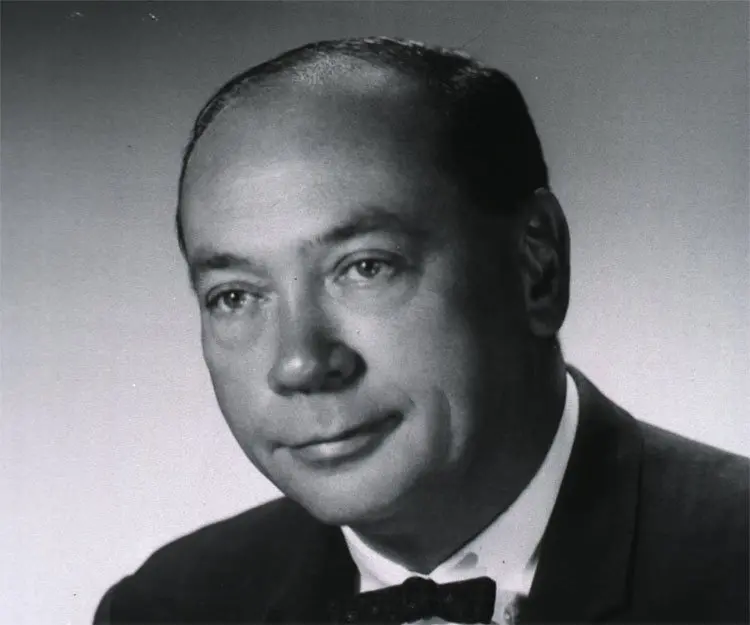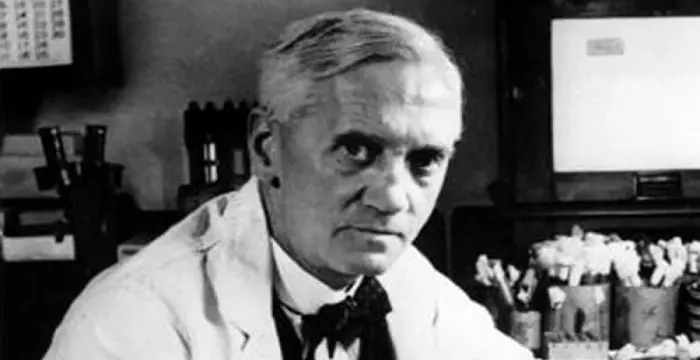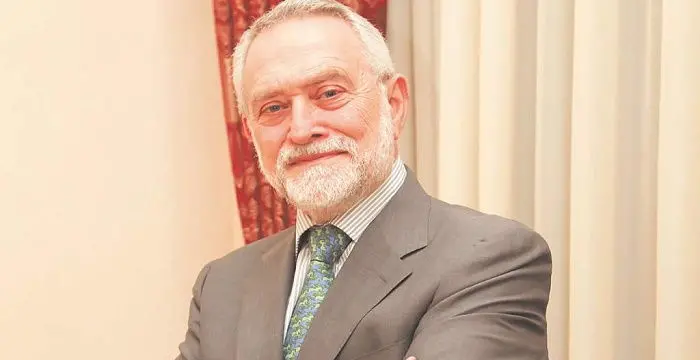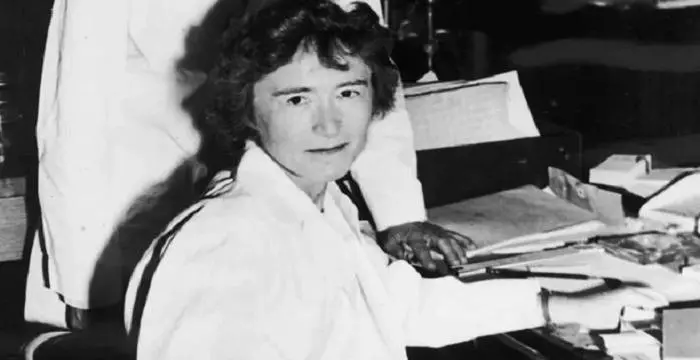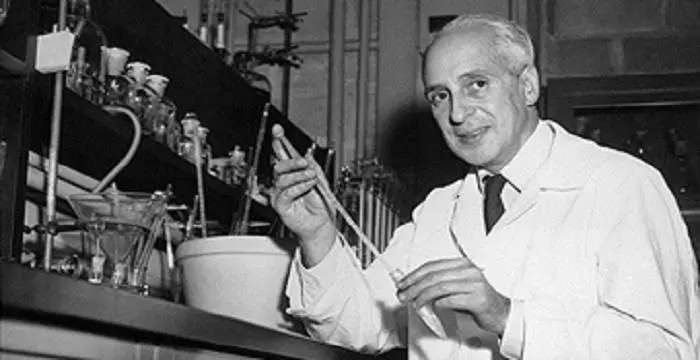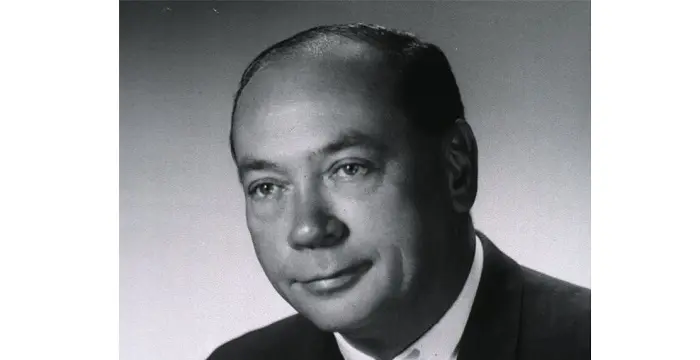
Earl W. Sutherland Jr. - Pharmacologists, Timeline and Facts
Earl W. Sutherland Jr.'s Personal Details
Earl W
| Information | Detail |
|---|---|
| Birthday | November 19, 1915 |
| Died on | March 9, 1974 |
| Nationality | American |
| Famous | Scientists, Pharmacologists, Biochemists, Pharmacologists |
| Spouses | Claudia Sebeste Smith (1964–1974; his death), Mildred Rice (1937–1964; divorce) |
| Birth Place | Burlingame, Kansas |
| Gender | Male |
| Father | Earl W. Sutherland Sr. |
| Mother | Edith M. Hartshorn |
| Sun Sign | Scorpio |
| Born in | Burlingame, Kansas |
| Famous as | Biochemist and Pharmacologist |
| Died at Age | 58 |
// Famous Pharmacologists
Howard Florey
Howard Florey was an eminent Australian pathologist who is credited for making penicillin available to the world. With this biography, explore about his childhood, life, achievements and timeline.
Ulf von Euler
Ulf von Euler was a noted Swedish physiologist who was one of the joint winners of the 1970 Nobel Prize in Physiology or Medicine. Check out this biography to know about his childhood, life, achievements, works & timeline.
Ferid Murad
Ferid Murad is an American physician and pharmacologist who won a share of the 1998 Nobel Prize in Physiology or Medicine. Check out this biography to know about his childhood, life, achievements, works & timeline.
Earl W. Sutherland Jr.'s photo
Who is Earl W. Sutherland Jr.?
Earl W. Sutherland Jr. was an American biochemist and pharmacologist, who won the 1971 Nobel Prize in Physiology or Medicine for his discoveries concerning the mechanisms of the action of hormones. Sutherland’s early ambition was to become a doctor and so after receiving his B.Sc. degree, he entered Washington University School of Medicine to obtain his MD. Instead, he was persuaded by Carl Ferdinand Cori to take up medical research. Consequently, he returned to Washington University after the Second World War and took up research work on epinephrine. Subsequently, he also showed how adrenaline regulates the breakdown of sugar, which in turn provides energy to the body. Identification of glucagon as a hormone is also another of his major achievements. Later, he identified the importance of liver phosphorylase (LP) in the process of glycogenolysis. However, his greatest achievement was made at Western Reserve University, where working with his team, he discovered cyclic adenosine monophosphate (Cyclic AMP) and showed how this ‘second messenger’ helped the effects of hormones like glucagon and adrenaline to transfer into cells. However, he was more than an eminent researcher; he also acted as advisor to many great scientists. His love for fishing was equally well-known.
// Famous Scientists
Juliane Koepcke
Juliane Koepcke is a German-Peruvian biologist, who was the lone survivor among the 92 passengers and crew of the ill-fated LANSA Flight 508 that crashed in the Peruvian rainforest on 24 December 1971. Know more about her life in this biography.
Henry Cavendish
Henry Cavendish was a theoretical chemist and physicist, renowned for discovery of hydrogen and calculation of the mass of earth. To know more about his childhood, profile, timeline and career read on
Konstantin Tsiolkovsky
Konstantin Tsiolkovsky was a Russian rocket scientist and a pioneer of astronautics. This biography provides detailed information about his childhood, family, personal life, career, achievements, etc.
Childhood & Early Life
Earl Wilber Sutherland Jr. was born on 19 November 1915, in Burlingame, Kansas. His father, Earl W. Sutherland Senior, was initially a farmer in New Mexico and Oklahoma. Later he shifted to Burlingame, where he opened a store and ran dry goods business for forty years.
Earl grew up under the direct supervision of his mother, Edith M. Hartshorn, who had her education at a ‘ladies’ college’ and some practical training in nursing. He was the fifth of his parents’ six children.
Initially they were quite well off and lived in a spacious house. Later, as the great depression of 1929 set in, their financial condition deteriorated. Nonetheless, Earl had a very comfortable childhood and had his schooling at Burlingame Junior/Senior High School, graduating from there in 1932.
During his school days, he was a keen sportsman and was especially good in tennis. Fishing was also another of his favorite activity. He also spent a lot of time swimming and hunting small animals like rabbits and squirrels with his own shot gun.
In 1933, Sutherland enrolled at the Washburn College in Topeka, graduating from there in 1937 with a degree in Bachelor of Science. With the fall in the family’s fortune, he had to support his college education by working as an orderly at a local hospital. Perhaps, it was here that he decided to become a doctor.
In 1937, Sutherland joined Washington University School of Medicine in St. Louis. Here he was spotted by Carl Ferdinand Cori, who at that time was a Professor of Pharmacology at the University. Impressed by Sutherland’s performance and honesty, he offered him assistantship in his laboratory albeit at a minimal pay.
in 1940, Sutherland had his firsthand experience in research. He worked on the effects of the hormones, epinephrine and glucagon, on the breakdown of glycogen to glucose, publishing two papers on it.
Sutherland received his medical degree in 1942 and then served as intern at Barnes Hospital for one year, simultaneously continuing his research work in the pharmacology department. Afterwards he was inducted into the army as a physician and served as a battalion surgeon in General Patton’s brigade.
Career
When the Second World War ended in 1945, Sutherland returned to the University of Washington at St. Louis. At that time, he could not make up his mind if he should go into practice or devote himself to research. Finally Cori was able to convince him to go into medical research.
Accordingly, Sutherland joined the Biochemistry Department of Washington University Medical School in 1945 as an Instructor in Pharmacology.From 1946 to 1950, he functioned as an Instructor in Biochemistry, from 1950 to 1952 as an Assistant Professor of Biochemistry and from 1952 to 1953 as an Associate Professor in Biochemistry.
The stint at the University of Washington was highly productive for Sutherland. Here, he worked with Christian de Duve on the actions of hormone at the molecular level and established that hyperglycemic-glycogenolytic, later renamed glucagon, came from the alpha cells of Langerhans. He thus established that glucagon was a hormone.
Over time, Sutherland became an independent researcher and began to make intense study of enzyme phosphorylase. He made several discoveries on the metabolism of glycogen and helped to identify the importance of liver phosphorylase (LP) in the process of glycogenolysis.
In 1953, soon after his work on LP, he was offered the post of a full professor at the Western Reserve (now Case Western Reserve) University. Accordingly, he shifted to Ohio and joined the institution as the Professor of Pharmacology in its School of Medicine. Later, he became the Director of the Department.
He remained at the Western Reserve University from 1953 to 1963. Here he worked on the purification process of LP with Ted Rall, Walter D Wosilait, and Jacques Berthet. They also analyzed several of its properties and published the results in series of papers, titled ‘The Relationship of Epinephrine and Glucagon to Liver Phosphorylase’.
The last paper of this series, titled ‘The Relationship of Epinephrine and Glucagon to Liver Phosphorylase: IV Effect of Epinephrine and Glucagon on the Reactivation of Phosphorylase in Liver Homogenates’, was published in 1956. In it the researchers described how they had used cell homogenate to hormone pathway.
Using cell homogenate was a novel idea because at that time it was believed that to study hormones one needed to use intact cells. Therefore, this in itself was a path-breaking discovery. More importantly, the work also led to the discovery of cyclic adenosine monophosphate, or cyclic AMP.
In early 1960s, the Western Reserve University was undergoing a change and Sutherland did not feel comfortable with that. So in 1963, he left the university to join School of Medicine at Vanderbilt University at Nashville, as Professor of Physiology.
The biggest attraction of Vanderbilt University was that Sutherland was promised more time for his research work. He took full advantage of that and, in 1965, he found that the cyclic AMP also occurs in bacteria. Up to then, it was thought that bacteria do not have any need for hormones.
In 1967, he received financial support through Career Investigatorship from American Heart Association and with that he continued his work on cyclic AMP.
In 1973, he left the University of Vanderbilt to join Leonard M. Miller School of Medicine at University of Miami as a Professor of Biochemistry.
At the University of Miami, Sutherland was involved in different types of novel research works. His work on adenosine monophosphate and guanosine monophosphate was especially noteworthy. He also co-authored four papers on it.
Sutherland also served on the National Institutes of Health Pharmacology Training Committee, and Arthritis and Metabolic Disease Program Committee. Although he was basically a researcher and teaching was not his strongest point many Nobel laureates had benefited from his advice.
Major Works
Sutherland is best remembered for his discovery of cyclic adenosine monophosphate. After years of experimenting, he and his team established that cyclic AMP is a ‘second messenger system’ and has important functions in many biological processes.
While working with liver phosphorylase at Western Reserve University, he and his team observed an unknown heat stable factor being produced in the presence of the hormones like epinephrine and glucagon. Later they observed that the factor provided stimulation for formation of liver phosphorylase.
This factor was later termed cyclic AMP. He also showed that effects of hormones like glucagon and adrenaline, which cannot pass through the plasma membrane, is transferred into cells with the help of this cyclic AMP.
Awards & Achievements
In 1969, he won Torald Sollman Award in Pharmacology and Gairdner Foundation International Award.
In 1970, he received Albert Lasker Award for Basic Medical Research and Dickson Prize in Medicine.
In 1971, Earl W. Sutherland received Nobel Prize in Physiology or Medicine "for his discoveries concerning the mechanisms of the action of hormones". In the same year, he also won Achievement Award from the American Heart Association.
In 1973, he was awarded National Medal of Science by U.S. President Richard Nixon. In the same year, he was also was elected as member of the National Academy of Sciences.
Personal Life & Legacy
In 1937, soon after acquiring his B. Sc. Degree from Washburn College, Sutherland married Mildred Rice. The couple had two sons and two daughters. Their marriage ended in a divorce in 1962.
In 1964, Sutherland married Claudia Sebeste Smith, who at that time was working as the assistant dean at the Vanderbilt University. They shared many interests and often went out on fishing trips. The couple remained married until his death in 1974.
Sutherland died on 9 March, 1974 in Miami Florida from massive esophageal hemorrhage that occurred due to some complication in surgery. His remains were buried in Burlingame City Cemetery, Burlingame, Kansas.
In 1974, soon after his death Leonard M. Miller School of Medicine at University of Miami established the Sutherland Memorial Lecture.
Vanderbilt University created the Sutherland Prize in 1996. It is awarded annually to a faculty member whose work has acquired national or international praise.
In 1997, the Vanderbilt University also started a Sutherland lecture and in 2001, created the Sutherland Chair of Pharmacology.
// Famous Pharmacologists
Alexander Fleming
Alexander Fleming was a Scottish biologist and pharmacologist who discovered enzyme lysozyme and antibiotic penicillin. This biography of Alexander Fleming profiles his childhood, life, research, discoveries, achievements and timeline.
Howard Florey
Howard Florey was an eminent Australian pathologist who is credited for making penicillin available to the world. With this biography, explore about his childhood, life, achievements and timeline.
Salvador Moncada
Salvador Moncada is a Honduran-British pharmacologist and professor. This biography of Salvador Moncada provides detailed information about his childhood, life, achievements, works & timeline
Earl W. Sutherland Jr.'s awards
| Year | Name | Award |
|---|---|---|
Other | ||
| 0 | Nobel Prize in Physiology or Medicine (1971) | |
| 0 | National Medal of Science (1973) | |
| 0 | Gairdner Foundation International Award (1969) | |
| 0 | Albert Lasker Award for Basic Medical Research (1970) | |
| 0 | Dickson Prize (1971) | |
Earl W. Sutherland Jr. biography timelines
- // 19th Nov 1915Earl Wilber Sutherland Jr. was born on 19 November 1915, in Burlingame, Kansas. His father, Earl W. Sutherland Senior, was initially a farmer in New Mexico and Oklahoma. Later he shifted to Burlingame, where he opened a store and ran dry goods business for forty years.
- // 1929 To 1932Initially they were quite well off and lived in a spacious house. Later, as the great depression of 1929 set in, their financial condition deteriorated. Nonetheless, Earl had a very comfortable childhood and had his schooling at Burlingame Junior/Senior High School, graduating from there in 1932.
- // 1933 To 1937In 1933, Sutherland enrolled at the Washburn College in Topeka, graduating from there in 1937 with a degree in Bachelor of Science. With the fall in the family’s fortune, he had to support his college education by working as an orderly at a local hospital. Perhaps, it was here that he decided to become a doctor.
- // 1937In 1937, Sutherland joined Washington University School of Medicine in St. Louis. Here he was spotted by Carl Ferdinand Cori, who at that time was a Professor of Pharmacology at the University. Impressed by Sutherland’s performance and honesty, he offered him assistantship in his laboratory albeit at a minimal pay.
- // 1937 To 1962In 1937, soon after acquiring his B. Sc. Degree from Washburn College, Sutherland married Mildred Rice. The couple had two sons and two daughters. Their marriage ended in a divorce in 1962.
- // 1940in 1940, Sutherland had his firsthand experience in research. He worked on the effects of the hormones, epinephrine and glucagon, on the breakdown of glycogen to glucose, publishing two papers on it.
- // 1942Sutherland received his medical degree in 1942 and then served as intern at Barnes Hospital for one year, simultaneously continuing his research work in the pharmacology department. Afterwards he was inducted into the army as a physician and served as a battalion surgeon in General Patton’s brigade.
- // 1945When the Second World War ended in 1945, Sutherland returned to the University of Washington at St. Louis. At that time, he could not make up his mind if he should go into practice or devote himself to research. Finally Cori was able to convince him to go into medical research.
- // 1945 To 1953Accordingly, Sutherland joined the Biochemistry Department of Washington University Medical School in 1945 as an Instructor in Pharmacology.From 1946 to 1950, he functioned as an Instructor in Biochemistry, from 1950 to 1952 as an Assistant Professor of Biochemistry and from 1952 to 1953 as an Associate Professor in Biochemistry.
- // 1953In 1953, soon after his work on LP, he was offered the post of a full professor at the Western Reserve (now Case Western Reserve) University. Accordingly, he shifted to Ohio and joined the institution as the Professor of Pharmacology in its School of Medicine. Later, he became the Director of the Department.
- // 1953 To 1963He remained at the Western Reserve University from 1953 to 1963. Here he worked on the purification process of LP with Ted Rall, Walter D Wosilait, and Jacques Berthet. They also analyzed several of its properties and published the results in series of papers, titled ‘The Relationship of Epinephrine and Glucagon to Liver Phosphorylase’.
- // 1956The last paper of this series, titled ‘The Relationship of Epinephrine and Glucagon to Liver Phosphorylase: IV Effect of Epinephrine and Glucagon on the Reactivation of Phosphorylase in Liver Homogenates’, was published in 1956. In it the researchers described how they had used cell homogenate to hormone pathway.
- // 1963In early 1960s, the Western Reserve University was undergoing a change and Sutherland did not feel comfortable with that. So in 1963, he left the university to join School of Medicine at Vanderbilt University at Nashville, as Professor of Physiology.
- // 1964 To 1974In 1964, Sutherland married Claudia Sebeste Smith, who at that time was working as the assistant dean at the Vanderbilt University. They shared many interests and often went out on fishing trips. The couple remained married until his death in 1974.
- // 1965The biggest attraction of Vanderbilt University was that Sutherland was promised more time for his research work. He took full advantage of that and, in 1965, he found that the cyclic AMP also occurs in bacteria. Up to then, it was thought that bacteria do not have any need for hormones.
- // 1967In 1967, he received financial support through Career Investigatorship from American Heart Association and with that he continued his work on cyclic AMP.
- // 1969In 1969, he won Torald Sollman Award in Pharmacology and Gairdner Foundation International Award.
- // 1970In 1970, he received Albert Lasker Award for Basic Medical Research and Dickson Prize in Medicine.
- // 1971In 1971, Earl W. Sutherland received Nobel Prize in Physiology or Medicine "for his discoveries concerning the mechanisms of the action of hormones". In the same year, he also won Achievement Award from the American Heart Association.
- // 1973In 1973, he left the University of Vanderbilt to join Leonard M. Miller School of Medicine at University of Miami as a Professor of Biochemistry.
- // 1973In 1973, he was awarded National Medal of Science by U.S. President Richard Nixon. In the same year, he was also was elected as member of the National Academy of Sciences.
- // 9th Mar 1974Sutherland died on 9 March, 1974 in Miami Florida from massive esophageal hemorrhage that occurred due to some complication in surgery. His remains were buried in Burlingame City Cemetery, Burlingame, Kansas.
// Famous Biochemists
Robert Huber
Robert Huber is a German biochemist and Nobel Laureate. Check out this biography to know about his childhood, life, achievements, works & timeline.
Charles Best
Charles Best was a great scientist and a renowned physiologist who is remembered for being the co-discoverer of insulin. Read this biography to learn about his profile, childhood, life and timeline.
Isaac Asimov
Isaac Asimov was an American professor of biochemistry and a renowned author of science fiction and popular science books. Read this biography to know more about his life.
Gerty Cori
Gerty Theresa Cori was a Nobel Prize winning biochemist who discovered the catalytic conversion of glycogen. To know more about her childhood, career, profile and timeline read on
Severo Ochoa
Severo Ochoa was a Spanish physician and biochemist who won the 1959 Nobel Prize in Physiology or Medicine. Check out this biography to know about his childhood, life, achievements, works & timeline.
Louis Pasteur
Louis Pasteur was a French chemist and microbiologist who developed the first vaccines for rabies and anthrax. This biography of Louis Pasteur provides detailed information about his childhood, life, achievements, works & timeline.
Earl W. Sutherland Jr.'s FAQ
What is Earl W. Sutherland Jr. birthday?
Earl W. Sutherland Jr. was born at 1915-11-19
When was Earl W. Sutherland Jr. died?
Earl W. Sutherland Jr. was died at 1974-03-09
Where was Earl W. Sutherland Jr. died?
Earl W. Sutherland Jr. was died in Miami, Florida
Which age was Earl W. Sutherland Jr. died?
Earl W. Sutherland Jr. was died at age 58
Where is Earl W. Sutherland Jr.'s birth place?
Earl W. Sutherland Jr. was born in Burlingame, Kansas
What is Earl W. Sutherland Jr. nationalities?
Earl W. Sutherland Jr.'s nationalities is American
Who is Earl W. Sutherland Jr. spouses?
Earl W. Sutherland Jr.'s spouses is Claudia Sebeste Smith (1964–1974; his death), Mildred Rice (1937–1964; divorce)
Who is Earl W. Sutherland Jr.'s father?
Earl W. Sutherland Jr.'s father is Earl W. Sutherland Sr.
Who is Earl W. Sutherland Jr.'s mother?
Earl W. Sutherland Jr.'s mother is Edith M. Hartshorn
What is Earl W. Sutherland Jr.'s sun sign?
Earl W. Sutherland Jr. is Scorpio
How famous is Earl W. Sutherland Jr.?
Earl W. Sutherland Jr. is famouse as Biochemist and Pharmacologist
